Allentown, PA Pollen and Allergy Report for Summer 2023
Pollen Allergy Trends in Allentown, PA
When is pollen lowest in Allentown, PA?

February
Lowest month total PPM
Avg. PPM
When is pollen highest in Allentown, PA?

April
Highest month total PPM
Avg. PPM
How does pollen in Allentown, PA compare to Pennsylvania?
Allentown has a higher average PPM than the state of Pennsylvania.
Allentown yearly avg PPM:
Pennsylvania yearly avg PPM:
How does pollen in Allentown, PA compare to the USA?
Allentown has a higher average PPM than the USA.
Allentown yearly avg PPM:
USA yearly avg PPM:
Is pollen worse this year in Allentown, PA?
Spring 2023 was worse than spring 2022.
Spring 2023 PPM:
Spring 2022 PPM:
Average PPM in Allentown, PA
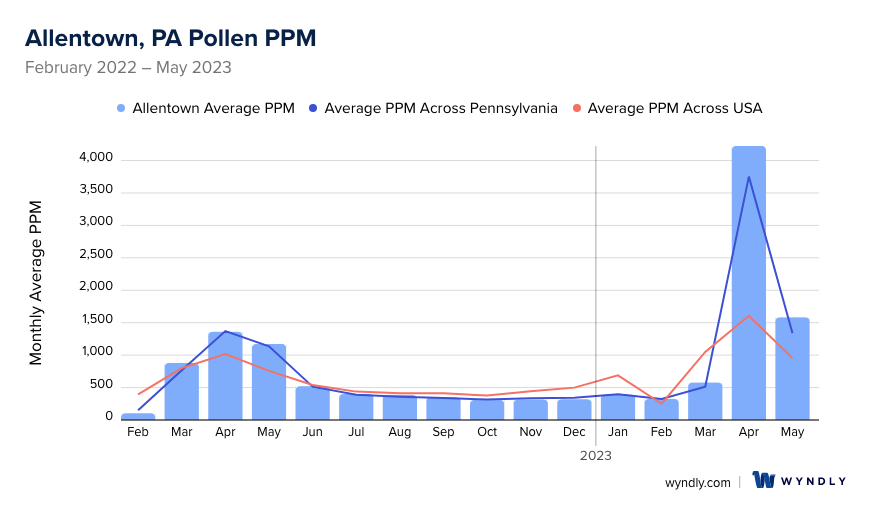
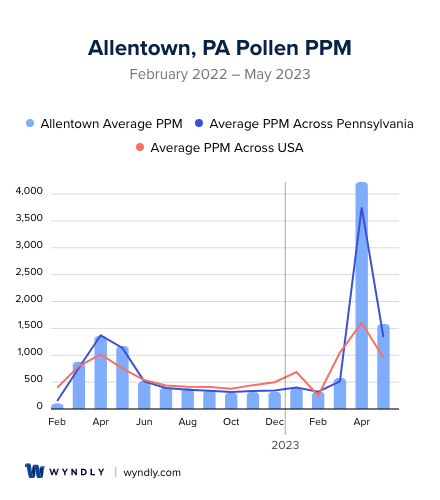
Allentown, PA Pollen and Allergy Breakdown by Month
Grass
When is grass pollen highest in Allentown, PA?
April has the highest grass pollen in Allentown, PA with an average PPM of
When is grass pollen lowest in Allentown, PA?
December has the lowest grass pollen in Allentown, PA with an average PPM of
Tree
When is tree pollen highest in Allentown, PA?
April has the highest tree pollen in Allentown, PA with an average PPM of
When is tree pollen lowest in Allentown, PA?
October has the lowest tree pollen in Allentown, PA with an average PPM of
Weed
When is weed pollen highest in Allentown, PA?
April has the highest weed pollen in Allentown, PA with an average PPM of
When is weed pollen lowest in Allentown, PA?
February has the lowest weed pollen in Allentown, PA with an average PPM of
Allentown, PA Pollen Monthly Breakdown by Pollen Type
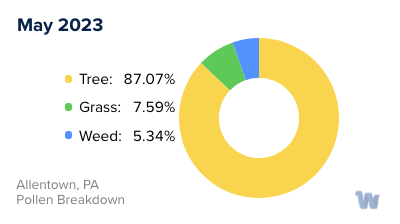
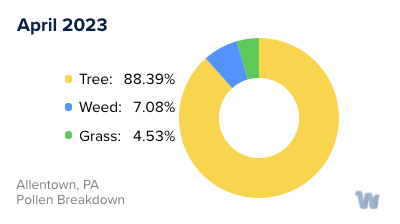
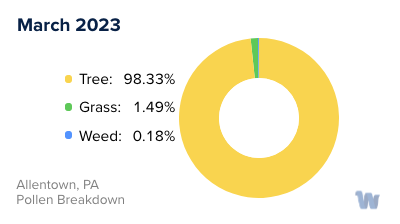
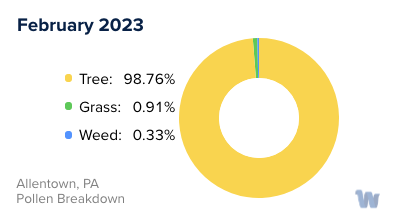
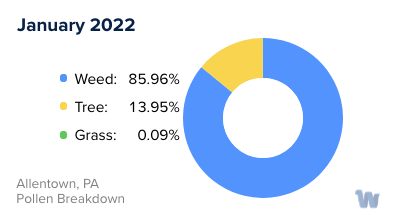
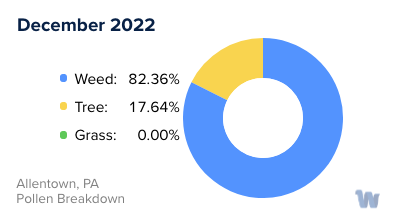
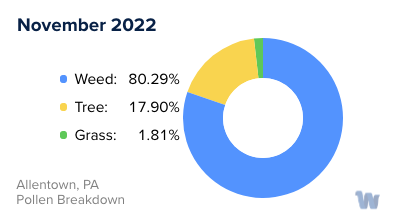
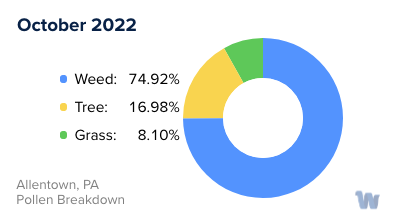
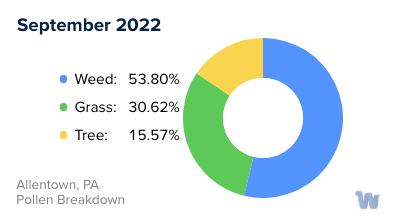
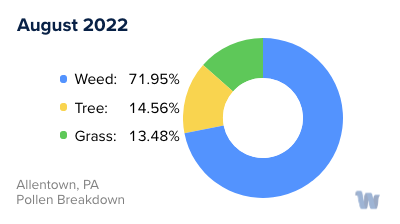
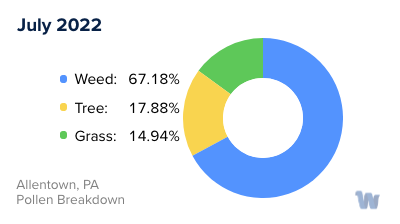
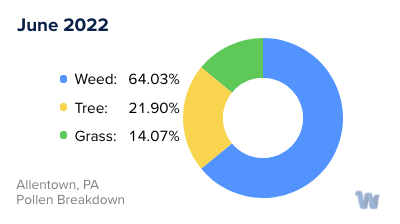
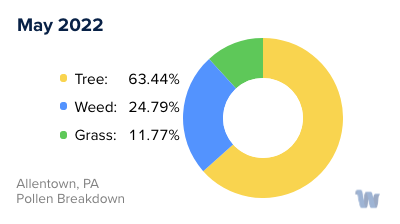
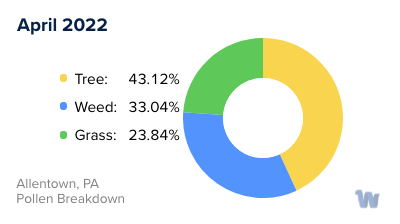
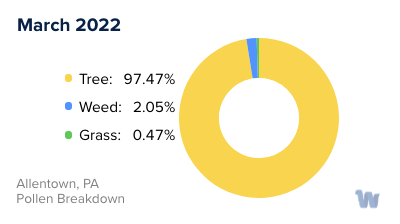
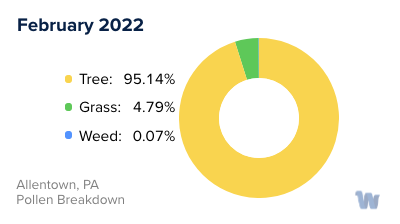
Pollen and Hay Fever in Allentown, PA
Allentown, Pennsylvania, like many other regions, experiences its fair share of pollen allergies and hay fever. As spring unfolds, trees, grasses, and weeds release tiny pollen particles into the air, triggering allergic reactions in susceptible individuals. Understanding the types of pollen and the corresponding seasons can help residents of Allentown better prepare and manage their symptoms.
Trees are often the primary culprits during the spring season. In Allentown, common tree species that release pollen include oak, maple, birch, and pine. These trees produce large amounts of pollen that is easily carried by the wind, making it difficult to escape exposure. As the temperatures rise, grasses begin to release their pollen, which can trigger allergies from late spring through early summer. In Allentown, common grasses responsible for hay fever symptoms include Timothy grass, Bermuda grass, and Kentucky bluegrass. Lastly, weeds become a major source of allergens during late summer and fall. Ragweed, one of the most notorious culprits, tends to release its pollen in late summer, causing significant discomfort for allergy sufferers.
The severity of pollen allergies can vary from year to year in Allentown. Factors such as weather patterns, rainfall, and temperature fluctuations influence pollen production and dispersion. Dry, windy days tend to worsen symptoms, as they allow pollen particles to remain suspended in the air for longer periods. Rainy days, on the other hand, can provide temporary relief by washing away pollen from the atmosphere. However, it is important to note that rain can also promote the growth of grasses and weeds, leading to increased pollen levels once the sun returns.
For individuals in Allentown with pollen allergies and hay fever, being aware of the types of pollen and the corresponding seasons is essential. By recognizing the triggers and understanding the local pollen calendar, residents can take proactive measures to minimize their exposure and alleviate symptoms.

